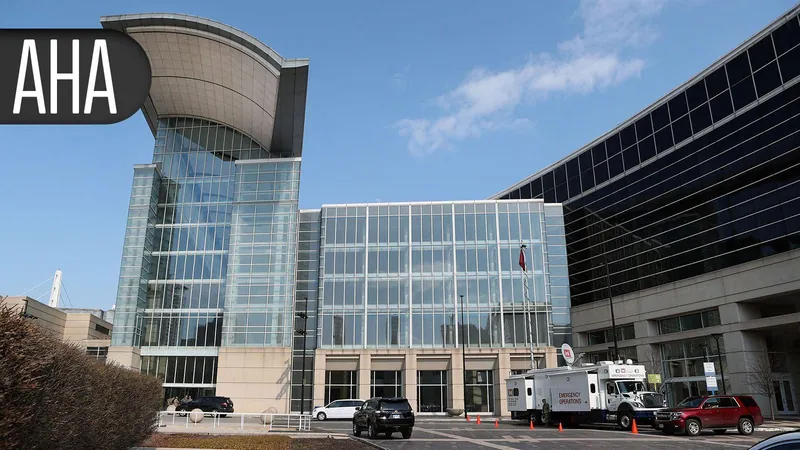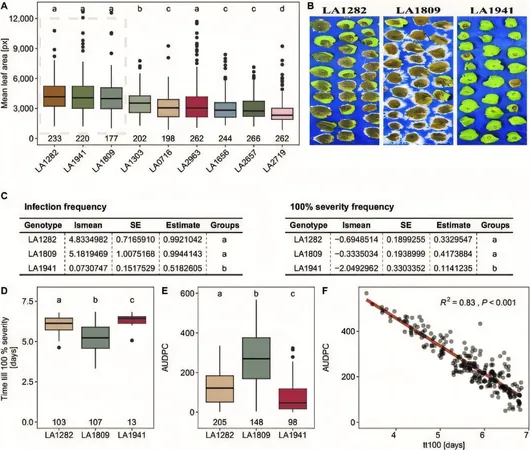
Revolutionary Study Reveals Catheter Ablation Outperforms Drugs for Ventricular Tachycardia After Heart Attacks!
2024-11-16
Author: Emma
Groundbreaking Revelation at AHA Scientific Sessions
In a groundbreaking revelation at the American Heart Association (AHA) Scientific Sessions in Chicago, a recent trial known as VANISH2 has unveiled that for patients suffering from ventricular tachycardia (VT) following heart attacks, catheter ablation is markedly more effective than traditional antiarrhythmic drugs. This clinical trial challenges long-held medical practices and could significantly alter treatment strategies for those diagnosed with ischemic cardiomyopathy.
Trial Results and Significance
The results depicted a dramatic reduction in both serious arrhythmic events and mortality. Over a median follow-up of 4.3 years, patients who underwent catheter ablation experienced a 25% lower incidence of death or serious heart rhythm events compared to those initially treated with antiarrhythmic medications, such as sotalol or amiodarone. Specifically, patients receiving ablation had a 50.7% rate of adverse events versus 60.6% in the drug therapy group, emphasizing the tangible benefits of this innovative procedure.
Key Findings on ICD Shocks and Mortality
Notably, catheter ablation led to a staggering 25% decrease in the incidence of appropriate implantable cardioverter defibrillator (ICD) shocks and 74% fewer cases of sustained VT that required medical intervention. While a reduction in death was observed—16% less for the ablation group—there was caution regarding the lack of sufficient power to draw firm conclusions on individual outcomes.
Expert Opinions on Treatment Protocols
John Sapp, MD, of Dalhousie University, highlighted the need to rethink current treatment protocols that typically prioritize medication before considering invasive procedures. "For too long, we have been uncertain about the optimal approach for patients with heart failure cardiomyopathy. The VANISH2 trial brings compelling evidence to the table that could encourage earlier intervention, potentially preventing disease progression."
Dr. Andrea Russo, past president of the Heart Rhythm Society, echoes this sentiment, stating, "This may very well change the way we practice medicine moving forward." While no explicit quality of life data was shared, experts suggest the reduction in ICD shocks—known to negatively impact patients' well-being—would likely result in improved overall quality of life.
Study Demographics and Design
VANISH2 enrolled 416 patients across 22 centers in Canada, the U.S., and France, all of whom had experienced a myocardial infarction and significant arrhythmic events within the previous six months. They were randomized into two groups: one receiving antiarrhythmic drugs and the other undergoing catheter ablation within a 14-day period. This diversity in the study cohort adds weight to the findings, although concerns were raised regarding the over-representation of male patients, which may affect the generalizability of the results.
Complications and Adverse Outcomes
Sapp's previous work with the initial VANISH trial had already indicated that transitioning to ablation was more effective when drug therapies failed. The latest findings push the boundaries further: why wait for medications to fail? Preliminary data from the study showed comparable serious adverse events between both treatment options, with catheter ablation-related complications such as major bleeding, stroke, and even death occurring in low percentages. Meanwhile, drug therapy was linked with its own adverse outcomes, including lung and thyroid complications.
Future of VT Treatment Post-Heart Attack
As the medical community absorbs these pivotal findings, it is likely that treatment methodologies for VT post-heart attack will undergo significant changes. For patients grappling with the debilitating effects of ventricular tachycardia, these advancements represent hope for more effective and timely interventions.
As questions remain—such as the optimal use of ablation techniques and the experiences of patients treated at lower-volume centers—one thing is clear: the landscape of cardiovascular treatment is evolving, paving the way for a potential revolution in patient care. Stay tuned, as this story develops and more insights from the trial emerge!









 Brasil (PT)
Brasil (PT)
 Canada (EN)
Canada (EN)
 Chile (ES)
Chile (ES)
 España (ES)
España (ES)
 France (FR)
France (FR)
 Hong Kong (EN)
Hong Kong (EN)
 Italia (IT)
Italia (IT)
 日本 (JA)
日本 (JA)
 Magyarország (HU)
Magyarország (HU)
 Norge (NO)
Norge (NO)
 Polska (PL)
Polska (PL)
 Schweiz (DE)
Schweiz (DE)
 Singapore (EN)
Singapore (EN)
 Sverige (SV)
Sverige (SV)
 Suomi (FI)
Suomi (FI)
 Türkiye (TR)
Türkiye (TR)